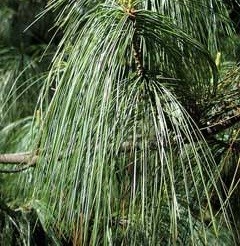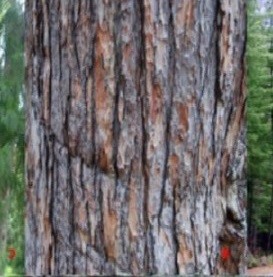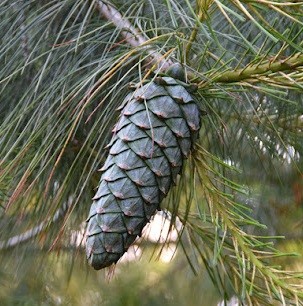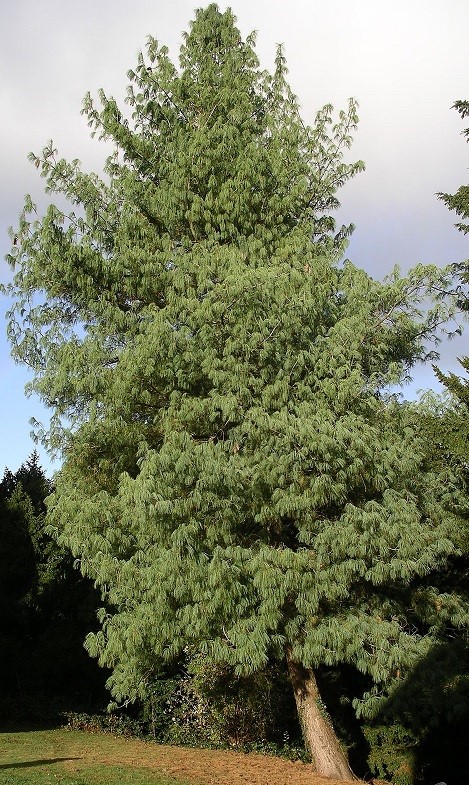Trees
Pinus wallichiana A.B. Jackson
Pinus wallichiana A.B. Jackson
Description :
A
large tree 30 to 45 m tall with a diameter of 1 to 1.5 m. The crown is conical.
The needles are in fives, 10 to 20 cm long and bluish to grey green in color.
The bole is straight, erect. It is monoecious. The male flowers or cones are
many, crowded in headlike clusters, 1 cm long. The female flowers are solitary
or 2 to 3 clustered at the ends of branches and bloom between April and June.
The fruit, female cone, is 15 to 30 cm long when mature. Seed in the cone takes
a year to mature after pollination or 2 years to complete that reproductive
cycle. There are two, winged seeds beneath each cone scale. Seed is shed
September through October. It occurs in pure stands or as part of the mixed
coniferous forest. Fire, porcupines and bears cause considerable damage to it.
It is susceptible to red ring rot (Phellinus pini), dwarf mistletoe, (Arceuthobium
minutissimum), and snow damage. This is one of the most valuable trees of
Pakistan. Native stands have been heavily overcut and need to be replanted.
Care must be taken to match the seed and seedlings to the appropriate
ecological zone. It is reproduced from seed. Seed crops are frequent, and seed
can be stored in sealed containers in a refrigerated environment for at least 2
years. It is considered a fast-growing tree. Yields of 5 to 8m3/ha/yr
are recorded on different quality sites. Grains straight, medium fine and uneven
textured, easily worked. Sapwood is white and heartwood is pink having specific
gravity of 0.48 and a calorific value of 4995 kcal, with moderate strength.
Distribution :
The
tree is native to Pakistan, Bhutan, Nepal, India, and Afghanistan. In Pakistan
it has been divided into two varieties: Var. wallichiana isolated in the
moist temperate zone of Murree-Galiat and Azad Kashmir. Artificial plantations
are being raised in Kaghan and swat. Var. karakorama isolated in the dry
temperate zone of the Gilgit Baltistan, Takhte-Sulaiman, Swat, Dir, Chitral,
Tirah, and Kurram Plantations are being raised in Kaghan and Swat. A moderately
intolerant tree that grows on a variety of soils but does best on fertile well
drained sandy clay to sandy clay loams. It is adapted to a precipitation zone
of 300 to 1500 mm/yr in a temperature range of -20 to 35°C. It prefers a humid
cool temperate/arid cold temperate climate at elevations between 1200 and 3700
m.
Uses :
Used
in construction, fuel, sleepers, and
various wood products (furniture match sticks, window frames, etc.).



